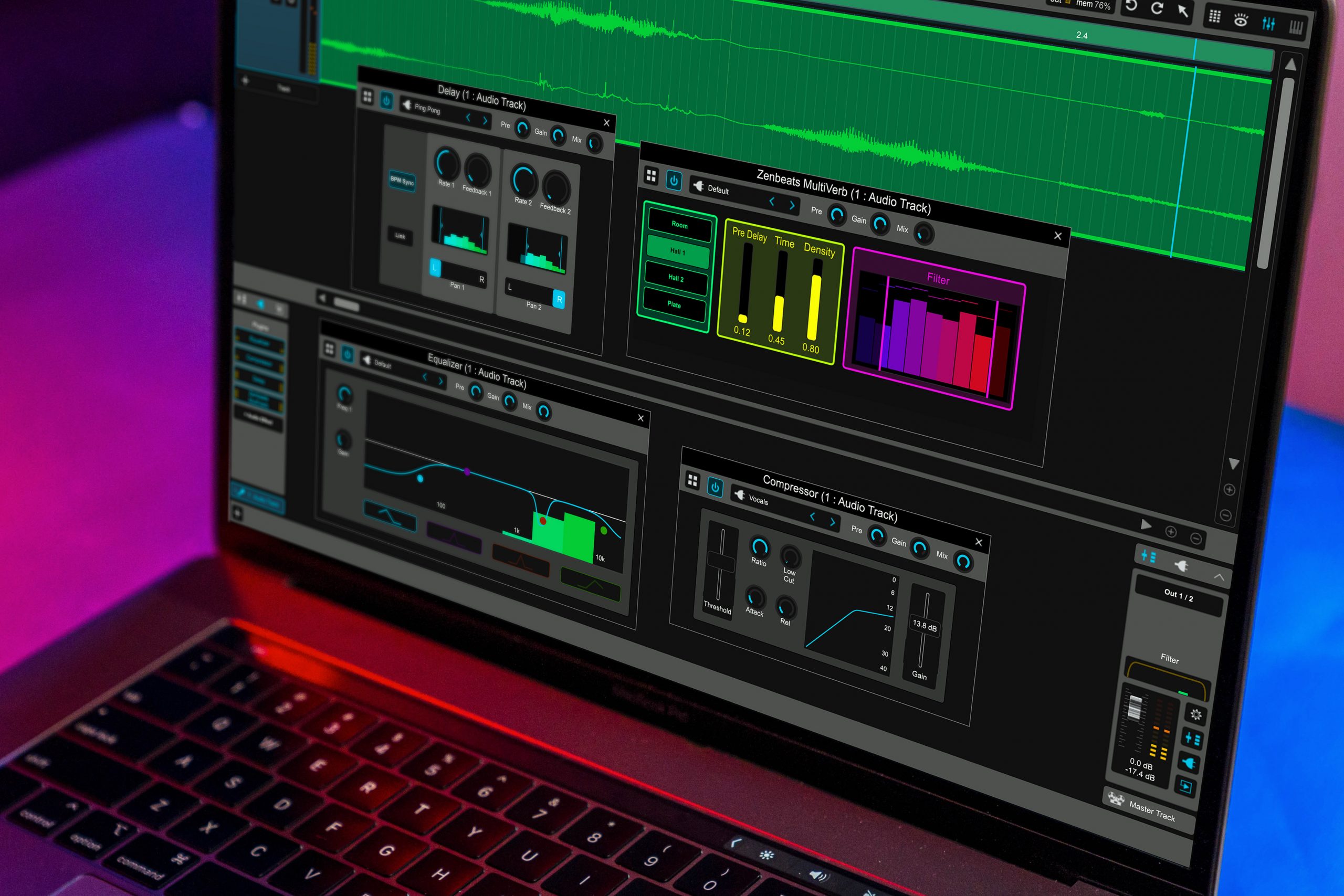Many people who are new to music production get overwhelmed by the sheer number of plug-ins available to use. However, no matter what kind of music you’re interested in making, there are four audio effects you should learn to use well in any production: EQ, compression, reverb, and delay.
At the end of the day, music is measured in notes, frequencies, volume, and time. In fact, once you boil them down to basics, the common parameters become a whole lot easier to wrap your head around. In the examples below, I’ve used Roland Zenbeats to illustrate how these audio effects can bring your mixes to the next level.
EQ
One can liken the way an EQ plug-in works to the bass and treble controls of the sound system in a car. Yet, an EQ effect offers a lot more control by comparison. The best way to practice various EQ applications is via a parametric equalizer. Indeed, most parametric EQ plug-ins allow you to boost or reduce the volume of frequencies between 20 Hz and 20,000 Hz.
"Music is measured in notes, frequencies, volume, and time. Boil it down to basics and common parameters become easier."
When all you see are numbers and letters like dB and Hz, EQ might look like a confusing tool. Remember, all that “dB” represents is decibels, which measure volume. “Hz” is short for Hertz, which is a unit to identify pitch and timbre.
20 Hz is the lowest frequency humans can hear, while 20,000 Hz is the highest. Additionally, to better understand how EQ affects an instrument or voice, I recommend trying the most common EQ applications. Some of these are low cut, high cut, band-pass, and the smiley face curve.
Compression
A compressor’s main job as an audio effect is to reduce the number of volume fluctuations throughout a performance. Threshold and ratio work in conjunction to compress the sound. Using the threshold fader, you can determine at what volume level the compressor should begin to compress the sound. If you set the threshold to -30 dB, the compressor will only compress whenever the sound reaches above that level.
By utilizing the ratio parameter, you can determine how much compression should occur. For example, if you set the ratio to 2:1, this means for every 2 decibels that reach above the threshold, the compressor will only let 1 decibel through. Likewise, if you set the ratio to 8:1, for every 8 dB that reaches above the threshold, the compressor will only let 1 dB through. The higher the ratio, the more compressed the sound will be.
Reverb and Delay
You might think that reverb and delay plug-ins are similar. However, they have different names for a reason. Reverb plug-ins emulate the reverberations in an actual space, whether that’s a small room or a massive cathedral. Delay plug-ins, on the other hand, repeat the sound you feed into them right back at you.
In most music production, delay and reverb work together to add depth and dimension to a mix. These audio effects are both absolute musts for vocal production. They can also make synths sound gigantic. Furthermore, when used in moderation, they can also add a touch of width and thickness to snares and toms.
"Delay and reverb work together to add depth and dimension to a mix."
Mix Knob Tricks
With most EQ and compression strategies, you’ll get better results if you keep the mix knob all the way up on both effects. Still, if you insert reverb and delay plug-ins directly on your audio or MIDI channel, keeping mix knobs at 100% might be a bit much.
Next time you work with a reverb plug-in, try experimenting with longer versus shorter reverberations by altering the reverb time. If you’re new to working with delay, try syncing it to your session tempo so that the echoes repeat in time.
One useful audio effects trick to keep echoes under control is to turn the feedback knob down. That will ensure the echoes don’t create a feedback loop by multiplying too many times.
Ears Wide Open
With these four audio effects, you’ll be able to elevate your mixes to pro-level in no time. As with all new techniques, practice makes perfect. Let your ears guide you as you explore the worlds of EQ, compression, reverb, and delay.






